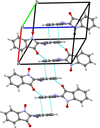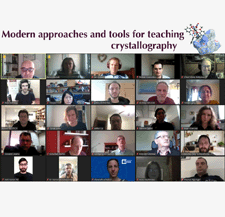issue contents
March 2024 issue

Cover illustration: Over the years, crystallography has established itself as the most powerful technique for understanding the structure of materials and rationalizing their properties and performance. Our discipline has been at the forefront of technological advances, from new and more intense radiation sources to new approaches to data collection under extreme conditions on smaller and increasingly more challenging samples. To keep up with those issues, it is necessary to encourage and support young and early-career scientists who are involved in crystallography. In this issue we highlight the history and activities of the German Young Crystallographers. Since its founding in 2013, the Young Crystallographers (YC) working group has rejuvenated the German Society for Crystallography by organizing meetings, hands-on experimental sessions at synchrotron beamlines, sessions on improving communication and presentation skills, a newsletter and presence on social media platforms, a prize for young scientists, a special issue on work done by young crystallographers, among other initiatives. The YC also foster collaboration with other YCs in Europe and around the world. The IUCr is enthusiastically supporting these efforts to guarantee the next generations of crystallographers will undertake the challenges that face our discipline in the future. It is hoped that this work will inspire young scientists in other countries. See: Meurer, Möbs, Nentwich, Weigel & Wöhrle [Acta Cryst. E80, 252–255].
AfCA collection


research communications





































 journal menu
journal menu








































